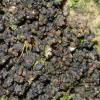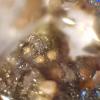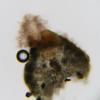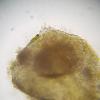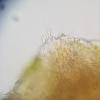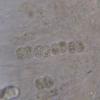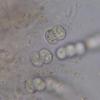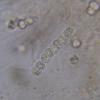
30-12-2025 17:14
 Bernard CLESSE
Bernard CLESSE
Bonjour à toutes et tous,Pourriez-vous aider Albe

29-12-2025 10:15
Hulda Caroline HolteHello, I found and collected this propoloid ascom

30-12-2025 16:44
Pascal DucosBonjour,Une anamorphe rose stipitée, très nombre

30-12-2025 16:41
Pascal DucosBonjour,Une anamorphe rose stipitée, très nombre

30-12-2025 09:04
Hello.A Pyrenomycete sprouting sparsely but very d

29-12-2025 17:44
Isabelle CharissouBonjour,J'aimerais savoir si d'autres personnes au

12-11-2021 00:03
Lepista ZacariasHi everybody,A week ago in my fiels trip I noticed
I found this nectria like fungi growing on Scytinium turgidum. We think this could be Pronectria diplococca, but this is not described for this host (as far as I can see).
The ascospores measured so far are 12,2 x 8,7 um, 2-celled with some that are 3 or 4 celled (caused by an extra division?). Ascomata perithecia start fully immersed, measured: 120um wide. Furthermore, there looks to be a Acremonium anamorph accompanying the Pronectria.
Does anyone know if this is Pronectria diplococca? And if not, any suggestions?
Kind regards,
Niek Schrier

I would like to confirm Your determination. Pronectria leptogiii is quite different.
Spores shape is distinct for P. diplococca. Your other measurements corresponding too.
We have no fotos from type material, only the drawing with an ascus.
the agglutination of ascospores is a rare feature in lichenicolous fungi.
P. diplococcus is known only from tye and 2 addional records from Ucraine! All on Collema.
So please be shure about the identity of the host. NEvertheless, Scythinium and genera of Collema agg are more or less related.
Cordial
Franz Berger
I found this in Utrecht on an old church (Dom). Collema is only found once elsewhere in NL and looks different. I am pretty sure this is Pronectria is on Scytinium, i'll try to verify it with some specialistst.
Feel free to ask for the photo's of you would like to have them. In the near future, this sample will be investigated by a dutch researcher to examine the Acremonium.
Kind regards, Niek
Molecular data would be great in addition, for sure. But before, it would be interesting to know chemical reactions (KOH and lactid acid).
Best wishes,
Alain

The Acremonium Typ anamorph excludes Xenonectriella, which might be considered by the uniseriately arranged ascospores (The only argument for Xenon. in this case); a feature already mentioned in the protologue.
The ontogeny of ascospores of Your specimen seems to be better developed than the type specimen. There are always 8 ascospores, sometimes adherent to each other, hyaline and smooth, additional arguments for Pronectria. Tschernobyl effects in the genom, ;-) ?
For me: Congratulations! to this new species report. Please give me a notice, if You are publishing about it (and other lichenicolous)!
I don't quite agree with your view on the lactic acid reaction. It just so happens that we (Christian and me) have repeatedly observed the positive reaction for Xenonectriella leptaleae (and X. ornementata is positive to lactic acid too), and for two ined. species belonging to the Nectriaceae. Perhaps it is precisely because this reaction is not often tested that we do not know more about it. Some descriptions of species belonging to this genus (mainly in South America) do not provide the information and in my opinion it should (indicating that the reaction is negative is information). Unfortunately I did not have access to your article (Herzogia, 2020), I would be happy ta read your observations.
I would love to find X. lutescens to learn more about this genus which lacks molecular data.
Best wishes,
Alain
I do have KOH and could buy some 80% food grade lactic acid to try to do the reactions myself. Are there protocols for these reactions, or is it just squashing a perithecia and observe it with a microscope while adding some KOH/lactic acid?
Kind regards,
Niek Schrier
The protocol I use is quite simple: on a slide, I place three drops: one of 10% KOH, one of lactic acid, and between the two a drop of water.
With a binocular magnifying glass, I observe the reaction of one ascoma in KOH, then I rinse it in water, and once it is well rinsed I place it in lactic acid. One perithecia, for 2 reactions (sometimes number of ascomata is not enough).
Good luck, don't worry, I'm not a professional either.
Alain
PS : on the other hand, I recommend reading Franz's article, excellent work !



